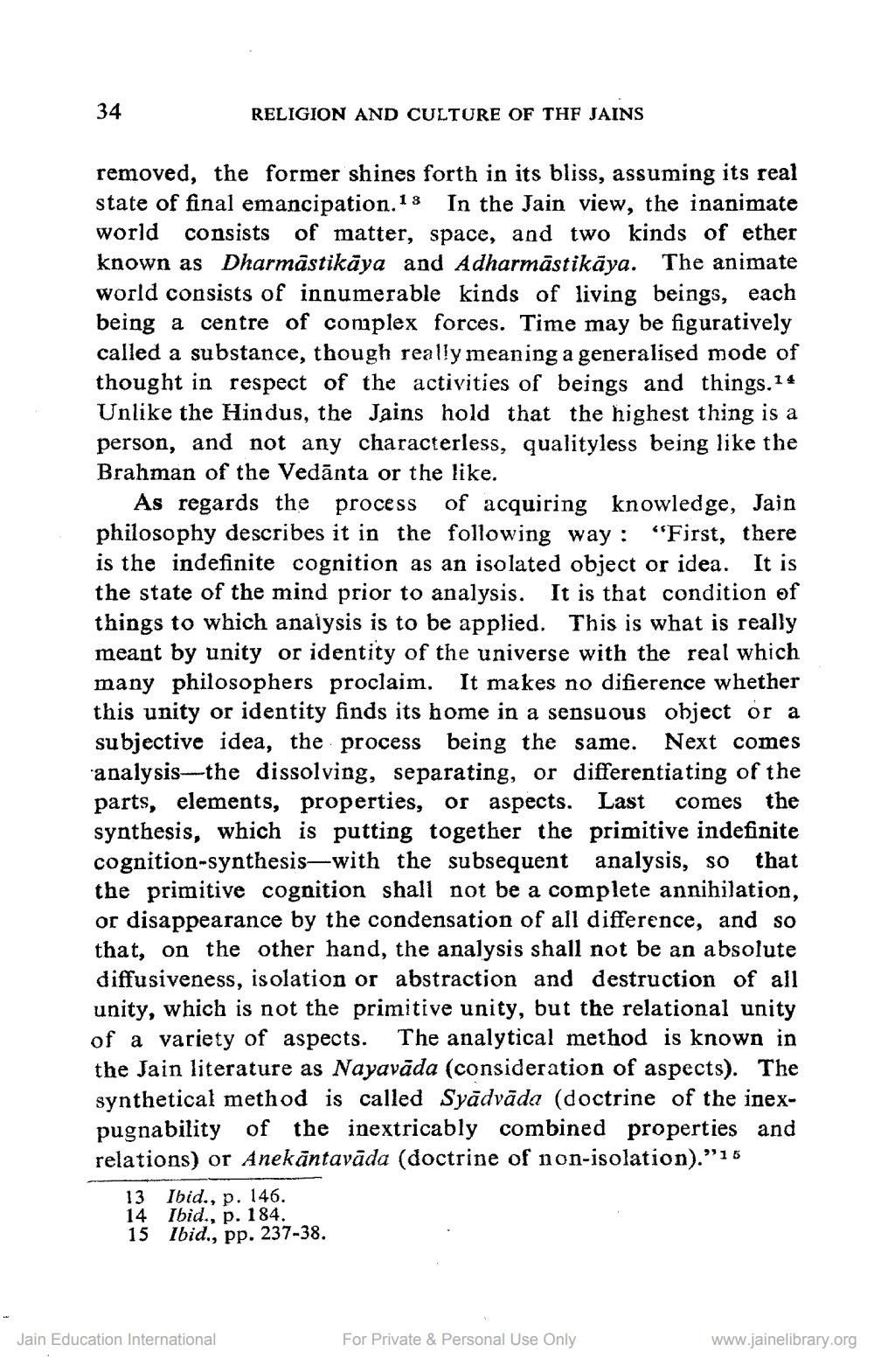________________
34
RELIGION AND CULTURE OF THF JAINS
removed, the former shines forth in its bliss, assuming its real state of final emancipation. 13 In the Jain view, the inanimate world consists of matter, space, and two kinds of ether known as Dharmāstikāya and Adharmāstikāya. The animate world consists of innumerable kinds of living beings, each being a centre of complex forces. Time may be figuratively called a substance, though really meaning a generalised mode of thought in respect of the activities of beings and things.14 Unlike the Hindus, the Jains hold that the highest thing is a person, and not any characterless, qualityless being like the Brahman of the Vedānta or the like.
As regards the process of acquiring knowledge, Jain philosophy describes it in the following way: "First, there is the indefinite cognition as an isolated object or idea. It is the state of the mind prior to analysis. It is that condition of things to which analysis is to be applied. This is what is really meant by unity or identity of the universe with the real which many philosophers proclaim. It makes no difierence whether this unity or identity finds its home in a sensuous ohject or a subjective idea, the process being the same. Next comes analysis the dissolving, separating, or differentiating of the parts, elements, properties, or aspects. Last comes the synthesis, which is putting together the primitive indefinite cognition-synthesis—with the subsequent analysis, so that the primitive cognition shall not be a complete annihilation, or disappearance by the condensation of all difference, and so that, on the other hand, the analysis shall not be an absolute diffusiveness, isolation or abstraction and destruction of all unity, which is not the primitive unity, but the relational unity of a variety of aspects. The analytical method is known in the Jain literature as Nayavāda (consideration of aspects). The synthetical method is called Syādvāda (doctrine of the inexpugnability of the inextricably combined properties and relations) or Anekāntavāda (doctrine of non-isolation)."16
13 Ibid., p. 146. 14 Ibid., p. 184. 15 Ibid., pp. 237-38.
Jain Education International
For Private & Personal Use Only
www.jainelibrary.org




